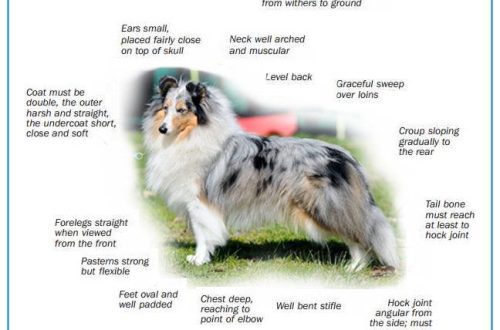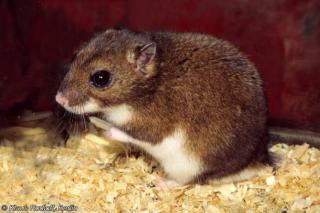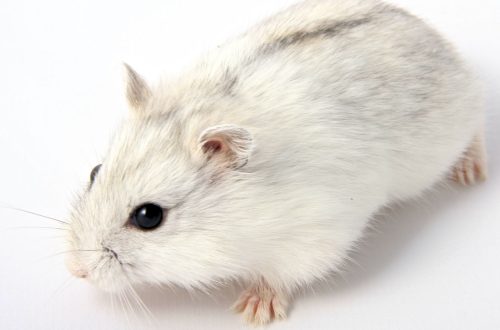
Toxicosis in guinea pigs
Toxicosis of pregnancy is the most common cause of death of pregnant or recently given birth females. This phenomenon is usually observed in the last 7-10 days of pregnancy and in the first week of lactation. This is a metabolic disorder, the external signs of which are as follows:
- absence or marked decrease in appetite;
- disheveled wool;
- depression;
- salivation (drooling);
- decreased muscle tone of the eyelids – drooping of the eyelids;
- sometimes muscle spasm.
There are several reasons for this violation, but this may not be a complete list:
- stress;
- large litter;
- hot weather;
- lack of food and/or water;
- wrong diet;
- anorexia or decreased appetite.
Signs of developing toxicosis of pregnancy are lightning fast and unexpected, and the treatment of this pathology is often unsuccessful.
The causes of toxicosis of pregnancy are as follows. A guinea pig in the last stage of pregnancy needs an increased amount of energy to provide it to the growing fetuses. In hot weather, the female may not feel comfortable enough, and her appetite decreases. The female does not consume enough food and consumes her own fat reserves to obtain the required level of energy. Fats are metabolized in the liver, with a high intensity of this process, products of incomplete breakdown of fats, ketones, are formed. Ketones are products that are toxic to the body, and the mumps feels bad. In turn, this manifests itself in the refusal of food and a further lack of nutrients and energy. It turns out a kind of vicious circle.
There are practically no ways to get the mumps out of this state. If the disturbance is noticed at the very beginning, it is possible to apply force-feeding of the gilt with high-calorie food and food with a high glucose content through a syringe. If the process has gone further, then the mumps needs subcutaneous injections of liquid preparations and steroids.
But in most cases, toxicosis can be prevented. It is important to create the most comfortable conditions for the pig and ensure constant access to water and food. The animal’s mobility should not be restricted. She should get at least 20 mg of vitamin C per day and plenty of fresh vegetables. Stress should be avoided, no need to once again take her in your arms or touch, you also need to reduce the level of noise and other stress factors. Some authors suggest adding glucose to drinking water during the last two weeks of pregnancy and the first week of lactation, as well as calcium to prevent hypocalcemia in females (i.e., a decrease in blood calcium levels).
It should be borne in mind that even the best care for a pregnant female does not exclude the risk of developing toxicosis. This must be remembered when you decide to get offspring from your pig.
Toxicosis of pregnancy is the most common cause of death of pregnant or recently given birth females. This phenomenon is usually observed in the last 7-10 days of pregnancy and in the first week of lactation. This is a metabolic disorder, the external signs of which are as follows:
- absence or marked decrease in appetite;
- disheveled wool;
- depression;
- salivation (drooling);
- decreased muscle tone of the eyelids – drooping of the eyelids;
- sometimes muscle spasm.
There are several reasons for this violation, but this may not be a complete list:
- stress;
- large litter;
- hot weather;
- lack of food and/or water;
- wrong diet;
- anorexia or decreased appetite.
Signs of developing toxicosis of pregnancy are lightning fast and unexpected, and the treatment of this pathology is often unsuccessful.
The causes of toxicosis of pregnancy are as follows. A guinea pig in the last stage of pregnancy needs an increased amount of energy to provide it to the growing fetuses. In hot weather, the female may not feel comfortable enough, and her appetite decreases. The female does not consume enough food and consumes her own fat reserves to obtain the required level of energy. Fats are metabolized in the liver, with a high intensity of this process, products of incomplete breakdown of fats, ketones, are formed. Ketones are products that are toxic to the body, and the mumps feels bad. In turn, this manifests itself in the refusal of food and a further lack of nutrients and energy. It turns out a kind of vicious circle.
There are practically no ways to get the mumps out of this state. If the disturbance is noticed at the very beginning, it is possible to apply force-feeding of the gilt with high-calorie food and food with a high glucose content through a syringe. If the process has gone further, then the mumps needs subcutaneous injections of liquid preparations and steroids.
But in most cases, toxicosis can be prevented. It is important to create the most comfortable conditions for the pig and ensure constant access to water and food. The animal’s mobility should not be restricted. She should get at least 20 mg of vitamin C per day and plenty of fresh vegetables. Stress should be avoided, no need to once again take her in your arms or touch, you also need to reduce the level of noise and other stress factors. Some authors suggest adding glucose to drinking water during the last two weeks of pregnancy and the first week of lactation, as well as calcium to prevent hypocalcemia in females (i.e., a decrease in blood calcium levels).
It should be borne in mind that even the best care for a pregnant female does not exclude the risk of developing toxicosis. This must be remembered when you decide to get offspring from your pig.





